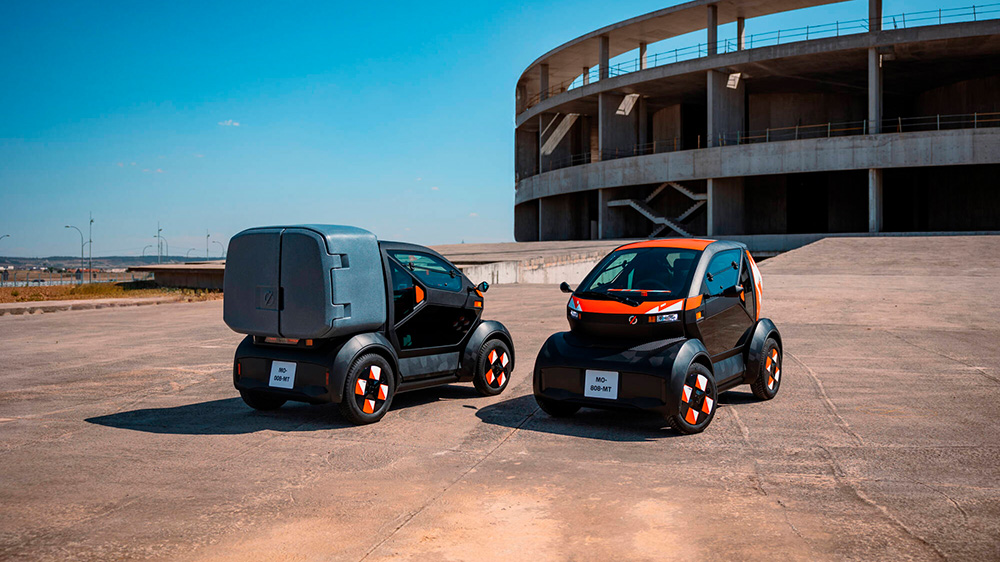★ ☆ ☆ ☆
the energy transition at the heart of the ecological transition
Energy transition is the name given to the change in energy generation methods and energy consumption. It’s about a shift towards a more frugal system based on decarbonized energy sources that are renewable, clean and safe. This applies to almost all human activities: heating, lighting, transportation, industry, etc. It’s about cutting the use of fossil fuels (oil, gas and coal) – non-renewable, greenhouse-gas-producing energy sources – in favor of renewable energy sources that are considered inexhaustible such as the sun (solar power), wind (wind power), water (hydraulic power), heat from underground (geothermal power), tide movement (tidal power) and organic matter (biomass).
This energy transition revolves around two main tenets: generating energy in ways that release less carbon dioxide (CO2) and cutting overall energy consumption, in particular by improving efficiency. The aim is therefore to do better, with less. This gradual shift from one energy model to another is the reason we talk about a “transition”.
★ ★ ☆ ☆
major challenges for the energy transition
combatting global warming
Three quarters of greenhouse gas emissions are due to energy combustion. This includes the transport of goods and people, including aviation (26%), industrial production of electricity, heat and other fuels (24%), and the energy used by households, businesses and institutions (14%) or by companies to produce or build (11%), according to Eurostat. The combustion of coal, oil and gas to produce this energy releases carbon in the form of CO2, which is responsible for more than 80% of the greenhouse effect. Global warming is the consequence. Abandoning fossil fuels in favour of decarbonised energies would automatically contribute to limiting emissions, particularly of CO2, and thus fight against global warming.Safeguarding the population and public health
Global warming causes an imbalance in atmospheric ecosystems that, among other things, leads to a rise in extreme weather phenomena (storms, heatwaves, floods, droughts) which pose a direct threat to the population and threaten key human activities like farming.
It’s also worth noting that the greenhouse gases that cause global warming are not the only emissions released by the burning of fossil fuels. They also release fine particles and other polluting emissions that affect air quality. By working to reduce them, energy transition therefore also improves public health.
reducing overall consumption
Energy transition also involves consuming less by living a more considered lifestyle and reducing waste.
It’s about avoiding using energy unnecessarily and optimizing systems so that they need less energy to produce the same yield. In the building, renovation, construction and automotive industries, strict norms and changes to heating systems can help cut yearly heating bills by 90%. This is what’s called energy efficiency. In the future, the development of smart grids and data from smart cities will facilitate the implementation of ambitious and appropriate energy efficiency policies.
★ ★ ★ ☆
the energy transition underway
The energy transition is not just a vision for the future, it is an ongoing process. The NGO WWF has identified in a summary “15 signals” that show its progress around the world, such as the growing share of renewable energies in new electricity production facilities. And forecasts by the International Energy Agency show that renewables are expected to account for a third of electricity generation by 2025, ahead of coal. The progression of energy transition can also be measured in terms of the number of jobs that it creates. The International Labour Organization predicts that the green economy will create 24 million jobs worldwide by 2030. In the energy sector, this will notably go hand-in-hand with changing the energy mix, promoting the use of electric vehicles and improving the energy efficiency of buildings.
★ ★ ★ ★
the electric vehicle, accelerating the development of green electricity consumption
Modes of transportation, especially those run on fuel, are a significant source of energy expenditure and emissions. Again, the “less and better” tenet applies. The transportation sector alone accounts for 30% of greenhouse gas emissions in the European Union. This is less than energy production, but more than agriculture and industrial processes.
electric mobility in the energy transition
The European Parliament points out that the road transport sector accounts for around one fifth of EU emissions, with private cars accounting for around 60% of these sectoral emissions.
Energy transition and electric vehicle development therefore seem to be closely linked if you look at the CO2 emissions released throughout the electric vehicle’s entire life cycle. Right from the start, the electric vehicle doesn’t release CO2 when being driven*. The origin of the electricity that it needs to run also plays an essential role in this positive impact. The more it comes from renewable sources, the more electric vehicles will turn out to be a smart choice. The European Environment Agency states that, using electricity solely from renewable energy sources, an electric vehicle releases four times less CO2 across its whole life cycle than a combustion-powered vehicle. What’s more, according to the FNH (foundation for nature and mankind), based on the average energy mix in France, an electric car already has a carbon balance that’s two to three times better than that of a combustion-engine car.
In parallel, electric vehicle technologies promote the incorporation of renewable energy sources into the electric mix. By helping energy supply and demand to coincide, smart charging and two-way charging (vehicle to grid) contribute to regulate and stabilize the network to make low-carbon, more affordable electricity available to everyone. Stationary energy battery storage systems using repurposed batteries from electric vehicles complete the picture by plugging gaps in the supply of renewable energy.
What remains is to reduce the impact of manufacturing; essential when it comes to developing the electric vehicle market. In particular, this concerns the extraction of raw materials, production method efficiency, battery evolutions and the development of recycling.
innovative mobility systems used as part of energy transition
The European Union has set itself the goal of reaching a 90% reduction in transportation-related greenhouse gas emissions by 2050. To get there, we’ll need to change our behavior too. Starting, notably with the transportation of people, by reducing mobility needs through promoting remote working for company employees, or even by designing cities that are more centralized and suited to “active” modes of transportation (walking, cycling) and public transportation. Shared mobility is another development angle. Services like carpooling and car sharing on a self-serve basis are in particular aimed at reducing traffic volume and optimizing the utilization rate of cars, especially in city centers. In the future, connected and self-driving electric vehicles will bring cities efficient solutions for improved traffic flow, freeing up some of the space taken up by cars and improving city-dwellers’ quality of life.
Energy transition is therefore accompanied by a change in energy policy but also by a change in our behaviour and lifestyles. It is a challenge, a vector of innovation and a source of opportunities. Mobilize, the new Renault Group brand, has understood this. By covering the entire ecosystem of electric and intelligent mobility, the solutions proposed by Mobilize voluntarily follow a path towards carbon neutrality.
*Neither atmospheric emissions of CO2 nor pollutants while driving (excluding wear parts).
Copyrights: inakiantonana, Mlenny, CarlFourie, LEMAL Jean-Brice, PLANIMONTEUR



